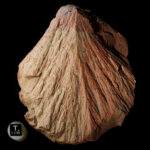Arunagirinathar’s Divine Flight: Living in the Parrot’s Body and Singing Kandar Anubhuti
In the rich tapestry of Hindu tradition, the life stories of saints and great devotees often carry profound spiritual teachings. One such sacred narrative tells of Arunagirinathar, the celebrated Tamil poet-saint, who, moved by divine grace and unwavering devotion to Lord Murugan, transcended the limits of ordinary human existence. In this account, Arunagirinathar’s soul departs his human body, enters that of a parrot, and journeys to the divine realm to fetch the parijatha flower for King Prauda Deva Raya. Upon return, with his human form sacrificially cremated, he remains in the parrot’s body, singing the mystical verses of Kandar Anubhuti. This story, far from being mere folklore, conveys timeless teachings on the nature of self, the power of devotion, and the role of divine intervention in the life of sincere aspirants. Below, we explore this narrative in depth, reflect on Murugan’s philosophy, draw on insights from Hindu teachings and great masters, and offer lessons for seekers today.
The Crisis of Sight and the Call to Divine Action
King Prauda Deva Raya’s loss of vision sets the scene. In many spiritual accounts, physical blindness symbolizes deeper inner darkness—a condition only dispelled by the light of divine grace. It was proclaimed that the parijatha flower from the realm of the gods (devaloka) could restore the king’s sight. This request underscores a core Hindu belief: when human effort reaches its limit, sincere invocation of the divine can lead to extraordinary intervention. Arunagirinathar, known for his intense love of Murugan, hears this plea. His readiness to serve highlights the ideal of selfless devotion (bhakti) and compassion. Great masters across traditions teach that true devotion naturally moves one to serve others, seeing the divine in every being, including a king in distress.
Transmigration of Consciousness: Exiting the Human Body
Arunagirinathar’s decision to leave his body is dramatic yet rich with symbolic meaning. In Hindu thought, the essential Self (atman) is not confined to the physical form. Scriptures teach that atman transcends birth and death, while the body is an impermanent vehicle. Such episodes illustrate the teaching that the aspirant, through intense sadhana (spiritual practice) and divine grace, may exercise powers beyond ordinary human limitations. By entering a parrot’s body, Arunagirinathar enacts the principle that true identity lies in the eternal Self, not in transient form. This also reflects the idea of “lila” (divine play), where the boundaries between the human and the divine realms blur for devotees wholly surrendered.
The Parrot’s Form: Symbolism and Significance
Why a parrot? In Indic tradition, the parrot often symbolizes speech, devotion through song, and the power of mantra. Parrots can mimic human voice, suggesting the devotee’s role in reflecting divine teachings through devotional songs. Arunagirinathar’s soul inhabiting a parrot underscores his destiny to sing praises of Murugan. The very act of flight signifies the liberation of consciousness, rising from earthly attachments toward the divine abode. In many devotional schools, singing sacred hymns is a direct means of communion with the deity. Thus, the parrot body becomes not a limitation but an apt instrument for expressing the devotee’s longing through song.
Journey to the Divine Realm and the Parijatha Flower
Flying to devaloka to obtain the parijatha flower illustrates absolute commitment and the potency of surrender. The parijatha flower itself holds deep symbolism: it is associated with divine fragrance, auspiciousness, and even immortality. In spiritual terms, it represents the nectar of divine wisdom that dispels ignorance (symbolized by the king’s blindness). This journey teaches seekers that inner obstacles—ignorance, ego, fear—must be overcome to attain the ‘flower’ of true knowledge and vision. Great teachers like Adi Shankaracharya emphasize that liberation (moksha) arises when avidya (ignorance) is removed by the light of self-knowledge; similarly, here, the flower restores sight, a metaphor for inner awakening.
The Body Cremated: Accepting Impermanence and Embracing Truth
While Arunagirinathar is away, his human body is found, declared lifeless by a jealous scholar Sambandan, and cremated. This event reinforces core Hindu teachings on impermanence: the body, though familiar, is transient. For the devotee who has merged consciousness with the divine mission, the loss of the former form is not tragic but liberating. Many masters, including Ramana Maharshi, have pointed out that attachment to the body conceals the ever-free Self. Arunagirinathar’s acceptance of continuing life as a parrot can be seen as embracing the truth: identity is not limited to form, and service to the divine overrides personal loss. His continued devotion in a new form exemplifies total surrender (saranagati), where even life and death are offered at the feet of the deity.
Singing Kandar Anubhuti: The Voice of Inner Experience
In the parrot’s body, Arunagirinathar sings Kandar Anubhuti—verses capturing the direct experience (“anubhuti”) of Murugan (also called Skanda or Kartikeya). These hymns are suffused with descriptions of divine reality, ecstatic devotion, and the path to inner union. Through the parrot’s voice, the aspirant shares profound insights: the nature of the mind, the obstacles of ego, and the bliss of divine presence. Devotional poetry in Hindu tradition often embodies the teachings of great masters: it works on the heart directly, bypassing intellectual barriers. Kandar Anubhuti, like many bhakti texts, invites readers to cultivate longing for Murugan, to practice inner reflection, mantra recitation, and surrender. Singing while in the parrot form signifies that divine experience can transcend physical constraints; what matters is purity of heart and intensity of longing.
Murugan’s Philosophy: Removing Darkness and Granting Grace
Lord Murugan is revered as the remover of darkness and bestower of wisdom. In many Tamil devotional traditions, Murugan is seen as the youthful divine teacher who guides devotees on the path of self-realization. Key elements of Murugan’s philosophy include:
-
Inner Light over Outer Ritual: Emphasis on inner transformation rather than mere external rites.
-
Overcoming Ego: Murugan’s victory over demons symbolizes the conquest of inner negativities.
-
Compassionate Guidance: Just as the guru guides the disciple, Murugan leads devotees to self-knowledge through grace (anugraha).
-
Devotional Fervor: Intense love and surrender open the heart to direct experience.
Arunagirinathar’s story exemplifies these: he overcomes bodily limitations, ego attachments, and through devotion receives divine assistance. His life and songs continue to inspire seekers to look beyond external forms and kindle the inner flame of awareness.
Insights from Hindu Teachings and Great Masters
Hindu spirituality offers multiple frameworks—advaita (nondual), bhakti (devotional), and tantra (inner energy practices)—all converging on the recognition of the Self and union with the divine. Great masters across centuries have emphasized:
-
Self as Eternal Witness: The atman is beyond birth and death; stories of body transcendence illustrate this truth.
-
Bhakti as Direct Path: Devotion opens the heart; divine grace responds to genuine longing.
-
Guru’s Role: A living master or inner guru (divine presence) guides aspirants through challenges.
-
Symbolism in Stories: Tales like Arunagirinathar’s journey serve as pointers to inner experiences—parrot flight as rising above mind’s chatter, cremation as letting go of ego-self.
For instance, Ramakrishna Paramahamsa spoke of how the divine can appear in any form to aid sincere devotees. Swami Vivekananda extolled the power of faith and selfless service. Arunagirinathar’s narrative aligns with these teachings, showing that when the devotee’s will is one with divine will, extraordinary support manifests.
Lessons for Modern Seekers
-
Transcend Attachment to Form: Recognize that identity is not limited to the body, social roles, or personal history. Cultivate inner freedom through meditation and self-inquiry.
-
Cultivate Unwavering Devotion: Like Arunagirinathar, let devotion be the guiding force. Regular chanting of Murugan mantras, recitation of devotional hymns (such as Tiruppugazh or Kandar Anubhuti), and heartfelt prayer open the door to divine grace.
-
Embrace Service: True devotion expresses outwardly as compassion and service to others. When we respond to the needs of others, we align with divine will.
-
Accept Impermanence: Reflect on the transient nature of life. This insight reduces fear of loss and deepens appreciation of the present moment.
-
Seek Inner Vision: Just as the king’s physical sight was restored, the aspirant seeks inner vision—clear perception of truth and wisdom. Practices like self-inquiry, mindfulness, and mantra help dispel inner darkness.
-
Trust Divine Guidance: When obstacles arise, remember that sincere effort and faith can invoke help from subtle levels. Maintain humility, sincerity, and openness to signs and guidance.
-
Use Symbolic Understanding: Reflect on symbolic elements—flight as rising above limiting beliefs, the flower as inner wisdom. Such reflection deepens practice beyond literal narratives.
Broader Reflections on Divine Play and History
This account is part of the sacred history honored by devotees. It illuminates how divine lila unfolds when the devotee’s heart is fully surrendered. While we may not literally leave our bodies, the essence of the story invites us to transcend limitations through devotion, selflessness, and inner transformation. In the Hindu worldview, such stories are living heritage, conveying truths that guide seekers on the spiritual journey.
Final Thoughts
Arunagirinathar’s journey in the parrot’s body, his mission to bring the parijatha flower for King Prauda Deva Raya, and his singing of Kandar Anubhuti underscore the transformative power of devotion to Lord Murugan. They teach us about the nature of the Self beyond physical form, the potency of unwavering faith, and the grace that responds to sincere aspiration. By reflecting on Murugan’s philosophy, the insights of great masters, and the symbolism embedded in this story, modern seekers can find inspiration to transcend inner obstacles, cultivate heartfelt devotion, and awaken to the inner light that dispels all darkness. May this narrative spur readers to deepen their practice, embrace selfless service, and realize the ever-present guidance of the divine in every circumstance.








